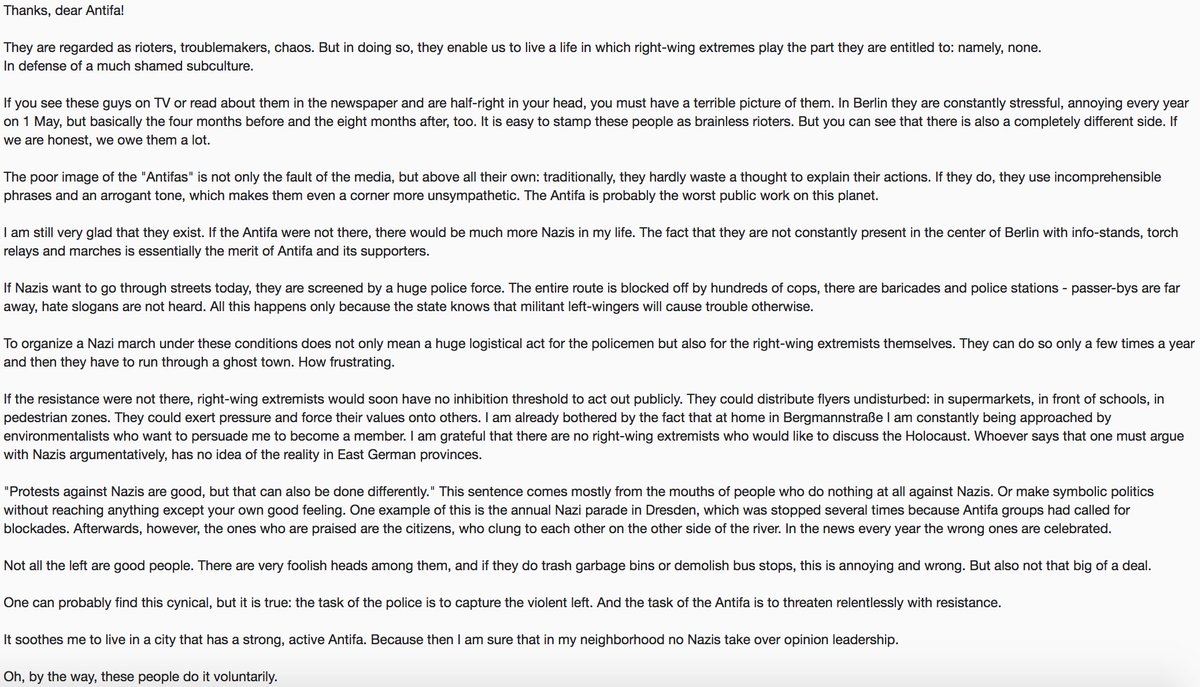AuthenticM
Member
From WashingtonPost:

Antifascists argue that after the horrors of chattel slavery and the Holocaust, physical violence against white supremacists is both ethically justifiable and strategically effective. We should not, they argue, abstractly assess the ethical status of violence in the absence of the values and context behind it. Instead, they put forth an ethically consistent, historically informed argument for fighting Nazis before it's too late. As Cornel West explained after surviving neo-Nazi attacks in Charlottesville, "If it hadn't been for the antifascists protecting us from the neo-fascists, we would have been crushed like cockroaches."
Though antifa are often treated as a new force in American politics since the rise of Trump, the anti-fascist tradition stretches back a century. The first antifascists fought Benito Mussolini's Blackshirts in the Italian countryside, exchanged fire with Adolf Hitler's Brownshirts in the taverns and alleyways of Munich and defended Madrid from Francisco Franco's insurgent nationalist army. Beyond Europe, anti-fascism became a model of resistance for the Chinese against Japanese imperialism during World War II and resistance to Latin American dictatorships.
Modern antifa politics can be traced to resistance to waves of xenophobia and the emergence of white power skinhead culture in Britain in the 1970s and '80s. It also has its roots in self-defense groups organized by revolutionaries and migrants in Germany, as the fall of the Berlin Wall unleashed a violent neo-Nazi backlash.
In the United States and Canada, activists of the Anti-Racist Action Network (ARA) doggedly pursued Klansmen, neo-Nazis and other assorted white supremacists from the late 1980s into the 2000s. Their motto was simple but bold: "We go where they go." If Nazi skinheads handed out leaflets at a punk show in Indiana about how "Hitler was right," ARA was there to show them the door. If fascists plastered downtown Alberta's Edmonton with racist posters, ARA tore them down and replaced them with anti-racist slogans.
Responding to small fascist groups may seem trivial to some, but the rise of Hitler and Mussolini show that resistance is not a light switch that can simply be flipped on in a crisis. Once the Nazi and fascist parties gained control of government, it was too late to pull the emergency brake.
In retrospect, antifascists have concluded, it would have been much easier to stop Mussolini back in 1919 when his first fascist nucleus had 100 men. Or to stamp out the far-right German Workers' Party, which had only 54 members when Hitler attended his first meeting, before he transformed it into the National Socialist German Workers' Party (the Nazi Party). Though the regimes that inspired their original protests are long dead, antifascists have devoted themselves to treating small fascist and Nazi groups as if they could be the nucleus of a murderous movement or regime of the future.



